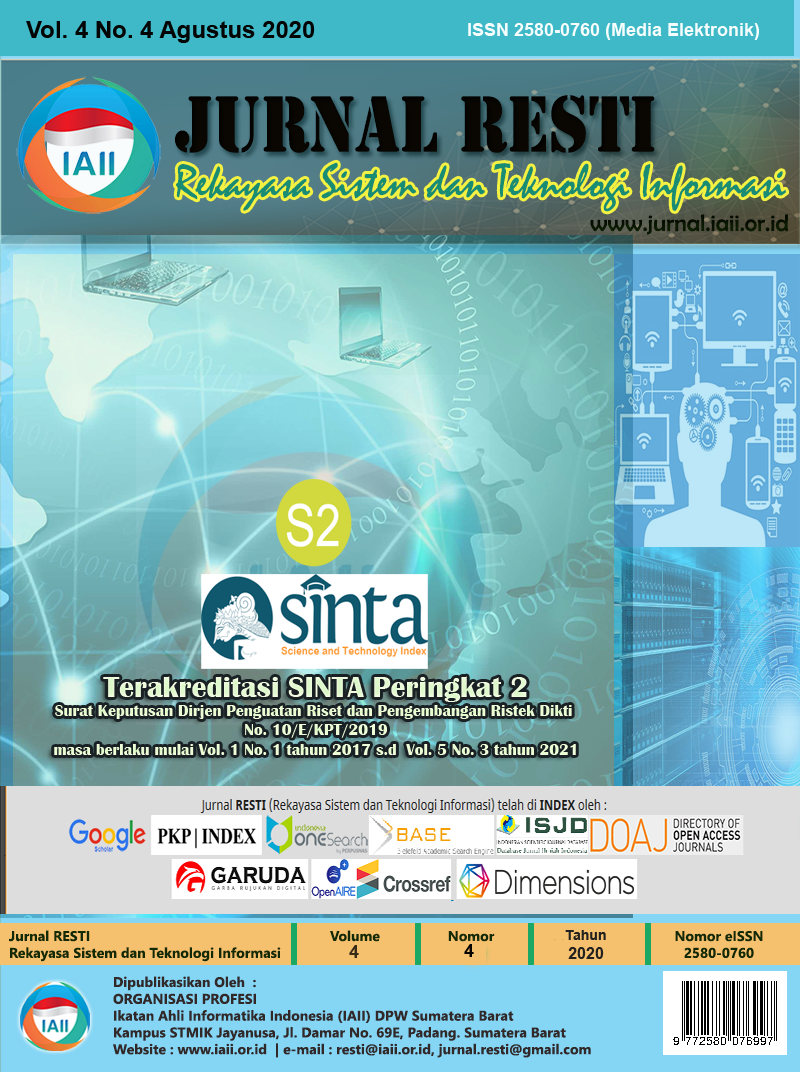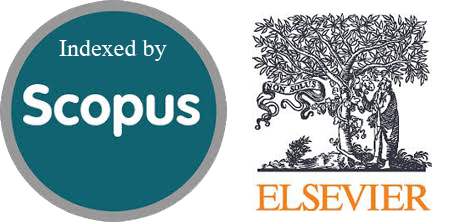Emotion Classification of Song Lyrics using Bidirectional LSTM Method with GloVe Word Representation Weighting
Klasifikasi Emosi pada Lirik Lagu menggunakan Metode Bidirectional LSTM dengan Pembobotan GloVe Word Representation
Abstract
The rapid change of the music market from analog to digital has caused a rapid increase in the amount of music that is spread throughout the world as well because music is easier to make and sell. The amount of music available has changed the way people find music, one of which is based on the emotion of the song. The existence of music emotion recognition and recommendation helps music listeners find songs in accordance with their emotions. Therefore, the classification of emotions is needed to determine the emotions of a song. The emotional classification of a song is largely based on feature extraction and learning from the available data sets. Various learning algorithms have been used to classify song emotions and produce different accuracy. In this study, the Bidirectional Long-short Term Memory (Bi-LSTM) deep learning method with weighting words using GloVe is used to classify the song's emotions using the lyrics of the song. The result shows that the Bi-LSTM model with dropout layer and activity regularization can produce an accuracy of 91.08%. Dropout, activity regularization and learning rate decay parameters can reduce the difference between training loss and validation loss by 0.15.
Downloads
References
S. O. Ali and Z. F. Peynircioğlu, "Songs and emotions: are lyrics and melodies equal partners.," Psychology of Music, vol. 34, no. 4, p. 511–534, 2006.
G. Xu, Y. Meng, X. Qiu, Z. Yu and X. Wu, "Sentiment Analysis of Comment Texts Based on BiLSTM," IEEE Access, vol. 7, pp. 51522-51532, 2019.
C. W. Chen, S. P. Tseng, T. W. Kuan and J. F. Wang, "Outpatient Text Classification using Attention-based Bidirectional LSTM for Robot-assisted Servicing in Hospital," Information (Switzerland), vol. 11, no. 2, p. 106, 2020.
J. Pennington, R. Socher and C. D. Manning, "GloVe: Global Vectors for Word Representation," Empirical Methods in Natural Language Processing (EMNLP), pp. 1532-1543, 2014.
R. Akella and T. S. Moh, "Mood Classification with Lyrics and ConvNets," Proceedings - 18th IEEE International Conference on Machine Learning and Applications, ICMLA 2019, pp. 511-514, 2019.
E. Çano and M. Morisio, "MoodyLyrics: A sentiment annotated lyrics dataset," ACM International Conference Proceeding Series, vol. Part F1278, no. 11, pp. 118-124, 2017.
R. Malheiro, R. Panda, P. Gomes and R. P. Paiva, "Emotionally-relevant features for classification and regression of music lyrics," IEEE Transactions on Affective Computing, vol. 9, no. 2, pp. 240-254, 2018.
D. Yang and W. S. Lee, "Music Emotion Identification from Lyrics," ISM 2009 - 11th IEEE International Symposium on Multimedia, pp. 624-629, 2009.
J. Russel, "A Circumplex Model of Affect," Journal of Personality and Social Psychology, vol. 39, no. 6, pp. 1161-1178, 1980.
Y. An, S. Sun and S. Wang, "Naive Bayes Classifiers for Music Emotion Classification Based on Lyrics," Proceedings - 16th IEEE/ACIS International Conference on Computer and Information Science, ICIS 2017, no. 1, pp. 635-638, 2017.
T. Lehman, "Genius," August 2009. [Online]. Available: http://www.genius.com.
"SongLyrics," 28 September 1996. [Online].
V. Srividhya and R. Anitha, "Evaluating Preprocessing Techniques in Text Categorization," International Journal of Computer Science and Application, pp. 49-51, 2010.
A. K. Uysal and S. Gunal, "The Impact of Preprocessing on Text Classification," Information Processing and Management, vol. 50, no. 1, pp. 104-112, 2014.
S. Hochreiter and J. Schmidhuber, "Long Short-term Memory," Neural Computation, vol. 9, pp. 1735-80, 1997.
M. Schuster and K. K. Paliwal, "Bidirectional Recurrent Neural Networks," IEEE Transactions on Signal Processing, vol. 45, no. 11, p. 2673–2681, 1997.
F. Chollet, "Keras," 2015. [Online]. Available: https://keras.io.
J. Han, M. Kamber and J. Pei, Data Mining Concepts and Techniques Third Edition, Burlington: Morgan Kauffman Publishers, 2012.
I. Rish, "An Empirical of the Naive Bayes Classifier," IJCAI 2001 Workshop on Empirical Methods in Artificial Intelligence, vol. 3, pp. 41-46, 2001.
T. M. Cover and P. E. Hart, "Nearest Neighbor Pattern Classification," IEEE Transaction on Information Theory, vol. 13, no. 1, pp. 21-27, 1967.
S. Shalev-Shwartz and S. Ben-David, Understanding Machine Learning from Theory to Algorithms, New York: Cambridge University Press, 2014.
I. Goodfellow, Y. Bengio and A. Courville, Deep Learning, Cambridge: MIT Press, 2016.
Copyright (c) 2020 Jurnal RESTI (Rekayasa Sistem dan Teknologi Informasi)

This work is licensed under a Creative Commons Attribution 4.0 International License.
Copyright in each article belongs to the author
- The author acknowledges that the RESTI Journal (System Engineering and Information Technology) is the first publisher to publish with a license Creative Commons Attribution 4.0 International License.
- Authors can enter writing separately, arrange the non-exclusive distribution of manuscripts that have been published in this journal into other versions (eg sent to the author's institutional repository, publication in a book, etc.), by acknowledging that the manuscript has been published for the first time in the RESTI (Rekayasa Sistem dan Teknologi Informasi) journal ;








